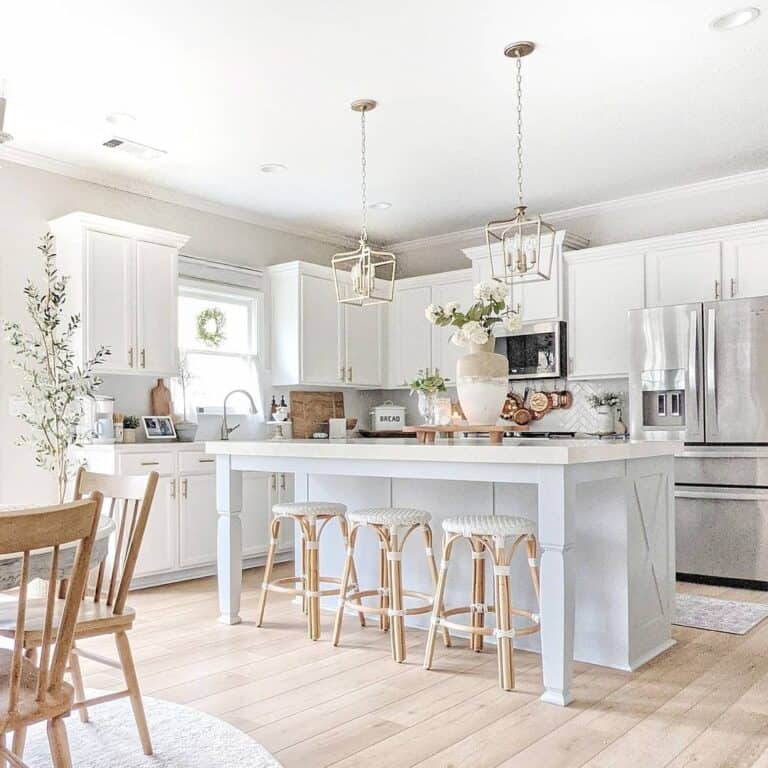Include Stability and Appeal with Tough Legs For Kitchen Island Installments
Important Variables to Consider When Picking Legs For Cooking Area Island
Choosing the proper legs for a kitchen area island involves a careful analysis of several aspects that can substantially influence both functionality and visual charm. Among these, the selection of product plays a critical role in ensuring longevity, while the layout should complement the existing style. Moreover, considerations such as elevation and weight assistance are important for stability and comfort. As we check out these elements, it comes to be clear that each decision can have far-ranging ramifications for the overall cooking area experience. What nuances should be taken into consideration in each of these classifications to attain the suitable balance?
Material Options
When choosing legs for a cooking area island, understanding the different product options is necessary for achieving both aesthetic charm and architectural integrity (Legs For Kitchen Island). The choice of product dramatically influences not only the toughness of the island yet also its general style and capability
Steel legs, often made from stainless steel or wrought iron, add a commercial and modern-day feeling while making certain longevity and security. These products are immune to use and can support considerable weight, making them optimal for larger islands.
Another option is crafted products, like MDF or plywood, which can be a lot more economical while still using a variety of finishes. They might not offer the very same level of stability as strong wood or metal. Legs For Kitchen Island. Materials such as acrylic or glass can develop a contemporary look, though they might need added support to ensure security.
Eventually, the selection of product for kitchen area island legs should straighten with the preferred performance and the overall style of the kitchen.
Design and Design

When considering design, the form and finish of the legs are essential. Conical legs can give a sense of lightness and elegance, while thicker, extra durable legs can convey strength and security. Additionally, the finish-- be it repainted, tarnished, or all-natural-- need to enhance the kitchen cabinetry and kitchen counter products to produce a unified look.
Furthermore, the design of the legs can also reflect individual preference. Custom-made or ornamental legs, such as those featuring elaborate carvings or one-of-a-kind geometric forms, can work as centerpieces, adding personality and individuality to the kitchen area. Eventually, the right choice will certainly not only enhance functionality yet likewise elevate the visual charm, making the kitchen area island a standout feature of the home.
Elevation Factors To Consider
Picking the proper elevation for cooking area island legs is important, as it straight impacts both capability and comfort. The common elevation for a kitchen area island commonly ranges from 36 to 42 inches, lining up with common counter top elevations.

It is likewise important to account for individuals' elevations and preferences. Tailoring the elevation can make certain a comfy experience for all family members, making the kitchen island a much more functional and satisfying area.
Weight Assistance
Guaranteeing appropriate weight support for kitchen area island legs is vital for both security and functionality. The kitchen island often offers multiple objectives, including cooking, eating, and extra storage space, visit our website requiring a robust support structure. When selecting legs, it is essential to consider the general weight capacity required based upon the island's meant usage and the products that will certainly be put on it.
The selection of material for the legs plays a considerable function in their weight-bearing abilities. Solid timber, metal, and heavy-duty composites typically supply exceptional stamina compared to lighter products. Additionally, the design of the legs-- whether they are straight, tapered, or have a pedestal type-- can influence their capacity to distribute weight properly across the structure.
Moreover, the leg positioning need to be tactically intended to boost stability. Legs positioned visit the website at the edges or with a bigger base can better sustain heavier tons. Constantly seek advice from the manufacturer's specifications concerning tons limits to make sure that the legs can sustain the designated weight without compromising security. In recap, picking kitchen area island legs with ample weight assistance is necessary for creating a secure and functional culinary room.
Installation and Upkeep
Proper setup and maintenance of cooking area island legs are vital for ensuring durability and stability. This commonly involves safeguarding the legs to the island base using ideal fasteners, making certain that the legs are level and lined up.
Once set up, normal maintenance is essential to preserve the honesty and appearance of the legs - Legs For Kitchen Island. For wooden legs, routine cleaning with a moist towel and application of suitable timber gloss can avoid dampness damages and preserve their surface. Steel legs may need a mild cleaning service to get rid of oil and grime, complied with by a completely dry cloth to stop corrosion development
Additionally, check the legs regularly for signs of wear or damage, such as fractures or loose joints. Tightening up screws or screws as required can additionally lengthen the life-span of the legs. By sticking to these installment and upkeep techniques, homeowners can ensure that their kitchen island remains durable and visually appealing for years to come.
Conclusion

Aesthetic comprehensibility is extremely important in selecting the style and style of legs for a kitchen area island, as these components greatly influence the general atmosphere of the area. Conical legs can give a sense of lightness and beauty, while thicker, a lot more durable legs can communicate toughness and security.Picking the appropriate height for kitchen island legs is essential, as it directly affects both performance and comfort. In summary, choosing kitchen area island legs with appropriate weight assistance is necessary for developing a secure and useful cooking redirected here area.
In final thought, choosing legs for a kitchen area island necessitates careful consideration of various factors, consisting of product choices, style, height, weight support, and installment.